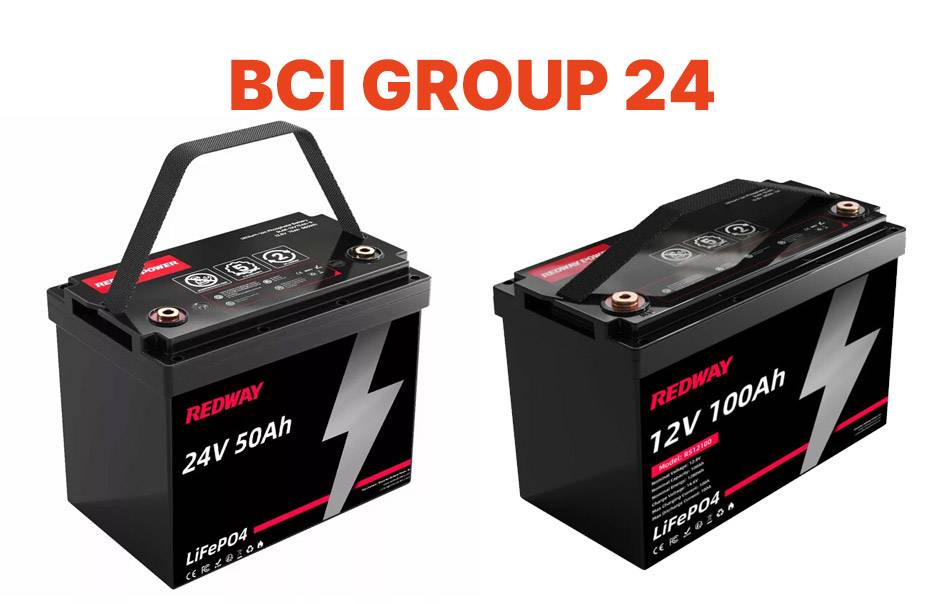
Blog
What Makes the BCI Group 24 RV Deep Cycle Battery Essential?
The BCI Group 24 RV deep cycle battery is essential for powering RV appliances due to its balanced capacity, durability, and compatibility. Designed for prolonged discharge, it provides reliable energy for lighting, refrigeration, and electronics. Its 24-series size ensures optimal fitment in most RVs, while deep cycle technology supports repeated charging without performance loss.
12V 100Ah LiFePO4 Battery (Ultra)
How Does a Deep Cycle Battery Differ from a Regular Car Battery?
Deep cycle batteries prioritize sustained energy output over short bursts, making them ideal for RVs. Unlike car batteries (designed for quick starter motor cranking), deep cycle variants use thicker plates and denser active materials to endure repeated discharge cycles. This allows them to power appliances for extended periods without damage.
Why Is the BCI Group 24 Size Critical for RV Applications?
The BCI Group 24’s dimensions (10.25″ L x 6.8″ W x 8.9″ H) and terminal placement ensure compatibility with most RV battery trays. Its 70-85 Ah capacity strikes a balance between energy density and physical size, providing sufficient runtime for medium-duty power needs without requiring excessive storage space.
What Are the Key Specifications of a BCI Group 24 RV Battery?
Typical specs include 12V output, 70-100 amp-hour capacity, 150-200 minute reserve capacity, and 600-800 cold cranking amps (CCA). Weight ranges 40-60 lbs depending on construction (flooded, AGM, or lithium). Cycle life varies from 400 cycles (flooded) to 3,000+ cycles (lithium), with depth of discharge (DoD) between 50-80%.
| Type | Cycle Life | Weight | Optimal DoD |
|---|---|---|---|
| Flooded | 400-600 | 50-60 lbs | 50% |
| AGM | 600-1,200 | 45-55 lbs | 60% |
| Lithium | 3,000-5,000 | 25-35 lbs | 80% |
How Do You Properly Maintain an RV Deep Cycle Battery?
Maintenance includes monthly voltage checks (12.6V+ when fully charged), terminal cleaning to prevent corrosion, and equalization charging for flooded types. AGM and lithium batteries require periodic state-of-charge verification. Avoid discharging below 50% for lead-acid or 20% for lithium. Store at 50% charge in cool, dry environments when not in use.
For flooded batteries, use a hydrometer to measure electrolyte specific gravity monthly. Top up with distilled water if plates are exposed, but avoid overfilling. Implement a desulfation cycle every 6 months using pulse chargers to break down sulfate crystals. AGM users should verify valve operation and ensure vents remain unobstructed. Lithium batteries benefit from occasional full discharges (once annually) to recalibrate battery management systems. Always use torque wrenches on terminals to maintain proper connection integrity (typically 8-12 Nm).
Which Charging Systems Work Best with Group 24 RV Batteries?
Smart 3-stage chargers with temperature compensation optimize charging for Group 24 batteries. For lithium variants, select chargers supporting LiFePO4 chemistry (14.4-14.6V absorption). Solar systems should use MPPT controllers sized to 20-30% of battery capacity. Alternator charging requires DC-DC converters to prevent undercharging during travel.
What Are the Signs of a Failing RV Deep Cycle Battery?
Key failure indicators include reduced runtime (30%+ capacity loss), swelling cases, excessive heat during charging, and inability to hold voltage above 12.4V after 12 hours rest. Flooded batteries may show stratified electrolyte (clear layer atop acidic layer) or plate sulfation (white crust on terminals).
How Does Temperature Affect BCI Group 24 Battery Performance?
Capacity drops 20% at 32°F and 50% at -22°F for lead-acid batteries. Lithium performs better but still loses 15-25% capacity below freezing. High temperatures (above 95°F) accelerate chemical degradation, reducing lifespan by 50% per 15°F over 77°F. Use insulated battery boxes and avoid direct sunlight exposure.
In cold climates, maintain batteries above 50% charge to prevent electrolyte freezing (-90°F at full charge vs. -16°F at 40% charge). For summer storage, position batteries away from engine compartments and consider active cooling solutions. Lithium batteries require heating pads below 32°F to enable charging. Temperature-compensated charging adjusts voltage by -3mV/°C/cell for lead-acid and -5mV/°C for lithium to optimize charge acceptance across seasons.
Expert Views
“Modern BCI Group 24 batteries now incorporate carbon-enhanced lead crystals and graphene additives, boosting cycle life by 40% compared to traditional AGM. For RVers, pairing with a battery monitor like the Victron BMV-712 ensures precise state-of-charge tracking. Always verify your converter’s absorption voltage matches your battery type – mismatches cause 80% of premature failures.” – Redway Power Systems Engineer
Conclusion
The BCI Group 24 deep cycle battery remains the RV industry standard due to its versatile balance of size and capacity. By selecting the appropriate chemistry (flooded, AGM, or lithium) and implementing rigorous maintenance, users can achieve 5-15 years of reliable service. Emerging technologies like lithium hybrid systems are pushing energy densities beyond 200Wh/kg while maintaining the Group 24 footprint.
FAQ
- Can I replace my RV’s Group 24 battery with a different BCI size?
- While possible, stick to Group 24 unless modifying battery trays. Larger groups (27/31) offer more capacity but may not fit. Smaller groups compromise runtime. Always verify physical dimensions and terminal orientation before switching.
- How often should I perform equalization charging?
- For flooded lead-acid: Every 30 cycles or monthly. AGM and lithium batteries don’t require equalization. Use a charger delivering 15.5-16V for 2-8 hours, monitoring electrolyte levels. Stop if voltage exceeds 16.5V or temperature rises above 125°F.
- Are lithium BCI Group 24 batteries worth the higher cost?
- Yes for frequent users: Lithium provides 3x+ cycle life, 50% weight reduction, and faster charging. Break-even occurs at ~500 cycles. Infrequent users may prefer AGM. Ensure your RV’s electrical system supports lithium’s higher voltage requirements.




